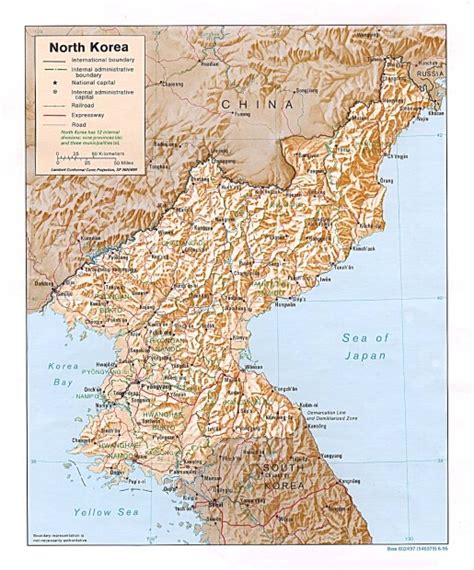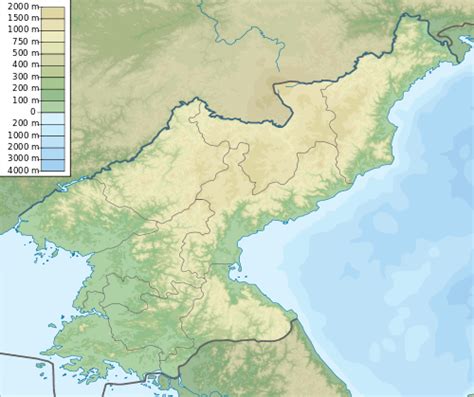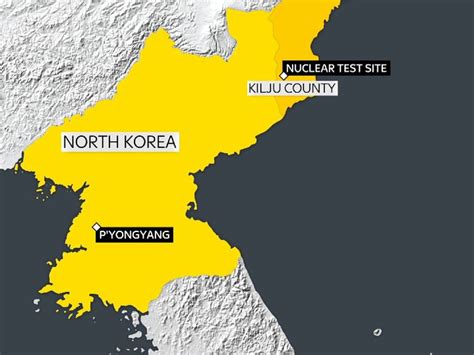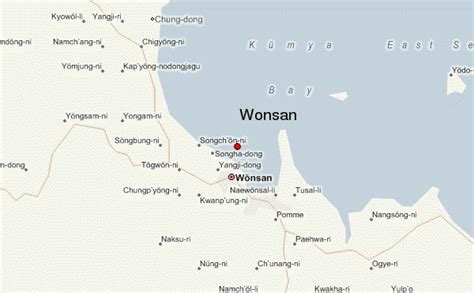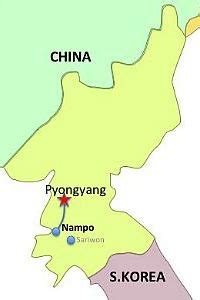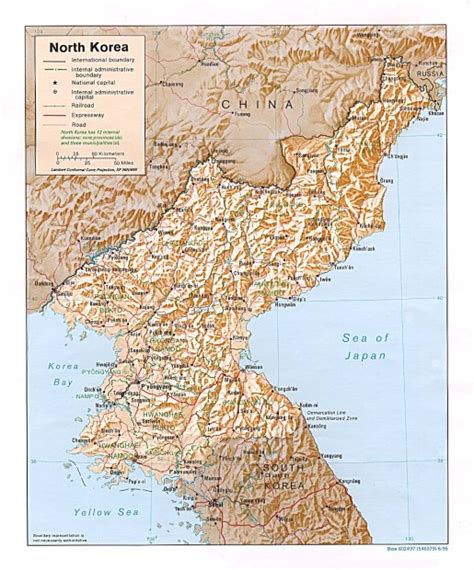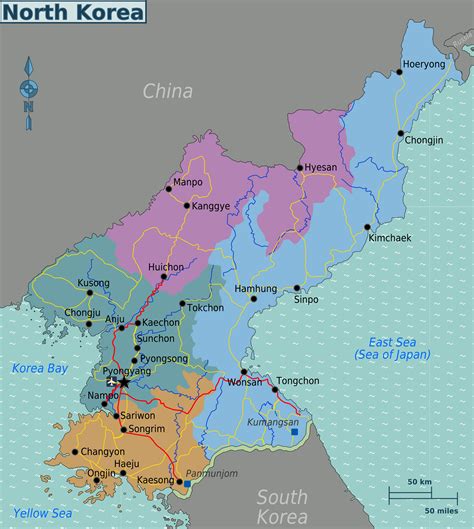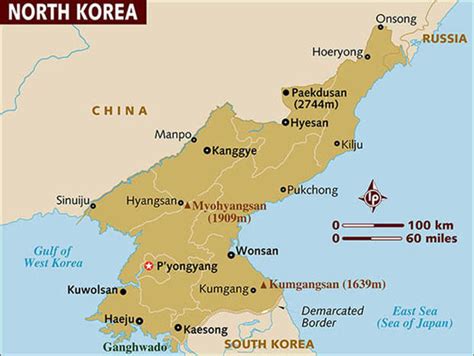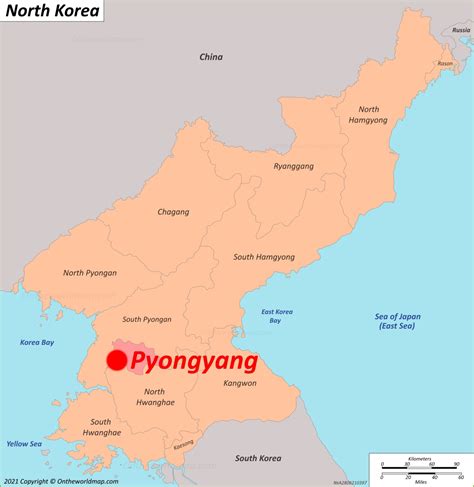Location: North Korea 🌎
Country: North Korea
ISO2 Code: KP
ISO3 Code: PRK
Location Type: Country
Latitude: 36
Longitude: 128
North Korea, officially the Democratic People’s Republic of Korea (DPRK), is a country in East Asia. It constitutes the northern half of the Korean Peninsula and borders China and Russia to the north at the Yalu (Amnok) and Tumen rivers, and South Korea to the south at the Korean Demilitarized Zone. North Korea’s border with South Korea is a disputed border as both countries claim the entirety of the Korean Peninsula. The country’s western border is formed by the Yellow Sea, while its eastern border is defined by the Sea of Japan. North Korea, like its southern counterpart, claims to be the legitimate government of the entire peninsula and adjacent islands. Pyongyang is the capital and largest city.
In 1910, Korea was annexed by the Empire of Japan. In 1945, after the Japanese surrender at the end of World War II, Korea was divided into two zones along the 38th parallel, with the north occupied by the Soviet Union and the south occupied by the United States. Negotiations on reunification failed, and in 1948, separate governments were formed: the socialist and Soviet-aligned Democratic People’s Republic of Korea in the north, and the capitalist, Western-aligned Republic of Korea in the south. The Korean War began in 1950, with an invasion by North Korea, and lasted until 1953. The Korean Armistice Agreement brought about a ceasefire and established a demilitarized zone (DMZ), but no formal peace treaty has ever been signed.
Post-war North Korea benefited greatly from economic aid and expertise provided by other Eastern Bloc countries, particularly the Soviet Union and China. However, relations between North Korea and the Soviet Union soured after the ascension of Nikita Khrushchev to the Soviet premiership in 1953, as Khrushchev denounced Stalinism while Kim Il Sung, North Korea’s first leader, upheld it. Kim briefly turned to China in the late 1950s before purging both pro-Soviet and pro-Chinese elements from the ruling Workers’ Party of Korea and promoting his personal philosophy of Juche as the state ideology. From the 1970s, South Korea’s economy began to boom whilst North Korea entered a state of stagnation. Pyongyang’s international isolation sharply accelerated from the 1980s onwards as the Cold War came to an end and China opened up to the West. The fall of the Soviet Union in 1991 then brought about a full-scale collapse of the North Korean economy. From 1994 to 1998, North Korea suffered a famine that resulted in the deaths of between 240,000 and 420,000 people, and the population continues to suffer from malnutrition.
According to Article 1 of the state constitution, North Korea is an “independent socialist state”. It holds elections, though they have been described by independent observers as sham elections, as North Korea is a totalitarian dictatorship with a comprehensive cult of personality around the Kim family. The Workers’ Party of Korea is the ruling party of North Korea and leads the Democratic Front for the Reunification of Korea, the sole legal political movement in the country. According to Article 3 of the constitution, Kimilsungism–Kimjongilism is the official ideology of North Korea. The means of production are owned by the state through state-run enterprises and collectivized farms. Most services – such as healthcare, education, housing, and food production – are subsidized or state-funded.
North Korea follows Songun, a “military first” policy which prioritizes the Korean People’s Army in state affairs and the allocation of resources. It possesses nuclear weapons, and is the country with the second highest number of military and paramilitary personnel, with a total of 7.769 million active, reserve, and paramilitary personnel, or approximately 30% of its population. Its active duty army of 1.28 million soldiers is the fourth-largest in the world, consisting of 4.9% of its population. A 2014 inquiry by the United Nations into abuses of human rights in North Korea concluded that “the gravity, scale and nature of these violations reveal a state that does not have any parallel in the contemporary world,” with Amnesty International and Human Rights Watch holding similar views. In addition to being a member of the United Nations since 1991, North Korea is also a member of the Non-Aligned Movement, G77, and the ASEAN Regional Forum.

Top North Korea HD Maps, Free Download 🗺️
Map
Maps
United States
United States
World Map
China
China
